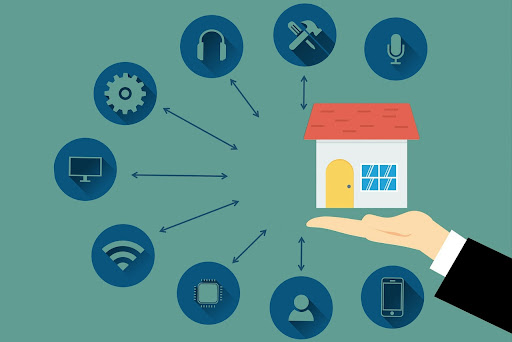Today’s business needs and attack surfaces are constantly changing, which means that traditional approaches to managing vulnerabilities can no longer keep up with the dynamically changing business needs and attack surfaces that are encompassing cloud computing, remote workers, Internet of Things, and mobile users. An ad hoc approach, a patch that appears when a vulnerability occurs, and even a comprehensive program for managing asset and vulnerability inventories must evolve into a multi-functional security strategy. There is a need for robust detection and response capabilities as part of this layered security approach.
When combined with a Continuous Threat Exposure Management (CTEM) program with automated pentesting and red teaming, Continuous Threat Exposure Management (CTEM) programs enable a strong cybersecurity posture when combined with an External Attack Surface Management program (EASM). Using these management approaches, it will be possible to identify and manage external-facing digital assets, as well as the security technology and processes that will be used to detect vulnerabilities in those assets.
The ability to prepare for threats is crucial to protecting digital business assets. In order to achieve this, it is necessary to implement a cohesive risk reduction strategy that is repeated on a regular basis. The objective of a comprehensive security strategy is to expose and address a broad array of known and unknown security threats, as well as identify security gaps that might arise from misconfigurations, software failures, and minor network changes that may create new security threats.
It is important to learn lessons from the past before implementing them in production in order to achieve best practices. As the name implies, best practices recommend the most optimal way to do things, whereas pentesting informs the security teams whether the implementation is correct or not. Using testing in combination with a standard of best practices and a standard of discovery, fix, and validation, organizations can minimize their risks associated with security.
With Ridge Security, you can automate your pentests, engage your red team, and manage your external attack surface
In order to overcome breaches, minimize risks, and increase security resilience, organizations must implement auto pentesting, red teaming, and EASM security measures in order to gain greater visibility and control over their security posture.
Using Ridge Security’s RidgeBot ®, an automated pentest robot that performs risk-based vulnerability assessments using highly sophisticated exploits, RidgeBot ® acts as a human attacker using sophisticated exploits. In order to detect exploits across an enterprise network, RidgeBot relentlessly searches for them and records their findings. As a result of RidgeBot, results and effectiveness are continuously measured and vulnerabilities are continuously verified.
The RidgeBot tool enables organizations to automate pentesting from the perspective of an attacker by conducting automated pentests. An exposure can be found, assessed, prioritized, and fixed before the exposure is even put into production, allowing the security team to identify a wide range of exposures that attackers could exploit. As a result of the validation, organizations can gain insight into what would happen in the event of an attack, how their defenses would cope, and how well their processes would work in the event of an attack. Through the use of breach and attack simulations as well as automated penetration testing, this validation is achieved.
RidgeBot in action
In the two dashboard screens, you can see the RidgeBot Attack Surface Tables. These are pre-defined templates in which RidgeBot is able to detect the OS type of a target machine, open ports, and active services on that machine. As well as domain names and sub-domains of the website, encryption keys, web frameworks, and external URLs/URIs, they also identify those. After RidgeBot has been installed, you will not have to pay a license fee in order to run any of these tests.
As you can see below, the dashboard screen shows you the predefined testing scenarios that have been set up within RidgeBot. As part of other tests, there is an attack surface identification test that includes a list of all open ports, active services for servers, and externally exposed URLs/URIs within other scenarios. A table like this will be located on the GUI, as well as in the report that can be generated in the format of a .csv file, a .pdf file, or a .html file.
In addition to scanning, exploiting, and validating vulnerabilities, RidgeBot also provides hard evidence to back up its findings. As a result of this, security and risk teams are able to identify and manage their digital assets as well as ensure that the technology and processes securing those assets are reliable and resilient in order to eliminate any risks and vulnerabilities.
- An exposure management program will begin by scoping the exposure, which is, of course, the first step in the process. In order to achieve this, it is necessary to map the external attack surface as well as the associated risks associated with SaaS and the software supply chain. As part of the process, it requires the business and the security functions to collaborate in order to identify (or refine, in later iterations) what is mission-critical, high value, or sensitive, as well as the business objectives to support it.
- During discovery we map the infrastructure, network, applications, and sensitive data assets, so that we can identify misconfigurations, vulnerabilities, flaws in the logic or process, and classify their respective risks and their consequences based on their location.
- In order to grade the relative importance of controls, CTEM advocates evaluating the likelihood of exploitability – with or without regard to compensating controls – as the basis for evaluating their relative importance. A security gap is scored as a low priority when there is a low probability of exploitability and may be postponed if there are not enough remediation resources available to close the gap.
- Invalidation – In order to evaluate the effectiveness of existing defenses, and validate that the immediate response and remediation are adequate, we will launch simulated or emulated attacks on the previously identified vulnerabilities, making sure to exploit initial foothold gains to test the attacker’s ability to exploit lateral movement routes to the critical assets. As a part of this process, both security controls and procedures are assessed for their effectiveness using a variety of techniques.
- The mobilization process is a step where corrective measures are implemented and actions are taken as a result of the findings of the validation that have implications for the organization based on the implications of the results. There is usually a manual process that is performed within the local context and is done manually. Due to the fact that CTEM relies heavily on collaboration, it is expected that the remediation operationalization will be nearly frictionless and that comprehensive information will be produced in a format that will optimize the rescoping process for the next cycle.
Security posture optimization is the ultimate goal of CTEM. Its continuous nature allows it to be remedied in just a matter of seconds and to apply previous ‘lessons’ to each new exercise. There is a strong relationship between success and agility, which is accelerated by both automation and rapid mobilization. Using this approach, and in collaboration with the executives, it is possible to define and meet the risk requirements based on the business priorities identified at the outset as part of the organizational or business priorities.
Three Reasons Cymulate is your Continuous Threat Exposure Management Partner of Choice:
1. Multifunctional validation platform
It is not possible to roll out the CTEM program without a platform that is capable of consolidating the different functions necessary for security posture assessment and optimization. A platform is a key component that simplifies the process and helps operationalize the CTEM program.
For example, Cymulate provides the ability to manage external attack surfaces (EASM), automate red teaming, prioritize vulnerabilities and perform breach and attack simulation capabilities.
2. Test and evaluate processes
It is insufficient to assess the security technologies available on the market. Initially, we stated that CTEM is not a tool, but rather a methodology. Collaboration between teams and the workflows between them are critical to the success of this project. In order to evaluate the security strategy, it is important to focus on the processes as part of the evaluation. It is important to distinguish between responsibilities, handoffs, information flows, awareness, response, priorities, and so on. In order to reflect how resilient an organization is, and set the baseline for the next scoping and discovery cycle, it is necessary to test the SOAR playbooks, SOC, and incident response validation (internal or managed) through table-top exercises and simulated attacks.
3. Translate findings into business implications
With the above combination of validation technologies as a part of a single platform, extensive information can be collected in a very efficient manner. Unfortunately, security teams are not given the time to really get into the details of each event or discovery they make. In order for them to be able to translate that information into scores that reflect the potential business impact or risk level, they will need some guidance during the mobilization phase. According to Gartner’s CTEM program, there is no game without executive leadership, and executive leadership requires straightforward reports, performance improvement over time, drift control, and a good score overall.
The success of a Continuous Threat Exposure Management program and the ultimate KPIs it is designed to meet is largely determined by the ability to make better and faster decisions. When security posture is tested and preemptive measures are taken in advance, you can minimize the risk of an attack while reducing the likelihood of adversaries moving to the next target.
Aside from offering the most comprehensive validation technology available, Cymulate provides organizations with the clarity they need to make informed decisions.
You can also read this:









